Situated less than 2 miles north of the Lancaster-Lebanon line, a unique community of 2,000 residents is nestled in the timbered hills of the Piedmont Province before the geography opens into the Great Valley comprising most of Lebanon County. It was in these lush and lovely woodlands that some forward-thinking individuals – a railroad man, a church group and Chautauqua enthusiasts – formed “a quiet retreat where art, culture, spiritualism, nature and community come together.”
For many Lancastrians, summer isn’t summer without paying at least one visit to Mount Gretna, whether it’s to enjoy a Broadway-caliber show, hear a Grammy Award-winning performer, swim in the lake, hike the trails or indulge in a decadent ice cream dessert. Earlier this year, Fodor’s Travel Guide named Mount Gretna as one of 15 “Amazing Lakeside Towns” to spend the summer.
I’d have to agree. One year I had the pleasure of spending most of a week in a rented house in Campmeeting, where I parked my car and never restarted it until I had to leave. Simply walking the different areas of Mount Gretna is an enriching and soul-inspiring activity. My fellow guests and I savored the many different styles of life in Mount Gretna and enjoyed a forced simplicity in a communal atmosphere we had never experienced before.
Established in 1883 by Robert Coleman, the town, which becomes an international destination for two days in August, because of its well-known outdoor art show, was founded as a simple respite on the Cornwall-Lebanon Railroad line. The stop was named by Mrs. Sophie Maxwell, who borrowed it from Gretna Green, a parish in southern Scotland popular for weddings. Her suggestion, Gretna, became Mount Gretna on the map, serving as a recreational destination where visitors could enjoy “huge pines and hardwoods, springs and a profusion of wild flowers (in a) spot where Old Pinch Road passed on its way from Lancaster to Lebanon.” In 1884, Coleman installed picnic facilities at the stop; in 1886, he commissioned construction of a dam across Conewago Creek, thereby creating Conewago Lake, which continues to serve as a popular summer recreation area.
The settling of the area included Coleman’s amusement park, with another similar attraction following in the 20th century and lasting only a year before weather and the Great Depression shuttered its operation.
A lot has changed in the 90-acre town over time; Gretna’s prosperity is a testament to its year-round residents and seasonal guests.
On most modern maps, the area mutually referred to as Mount Gretna is divided into three distinct sections: Mount Gretna, with its Chautauqua-influence, includes the Mt. Gretna Playhouse, The Jigger Shop, Porch & Pantry and the town’s post office, as well as the area known as Campmeeting, the earliest residential area of Mount Gretna; Mount Gretna Heights, home of the Mt. Gretna Inn and Stoberdale, an area that includes the Hide-A-Way restaurant; and Timber Hills, which is the area located west of Mount Gretna Road and includes the lake and the Timbers Restaurant & Dinner Theatre. Conewago Hill and TimberBridge also have Mount Gretna addresses. While Mount Gretna is known for its iconic cottages, modern architecture is also blending in among the trees.
— CHAUTAUQUA —
In 1892, around the same time Campmeeting was founded, a movement flourishing nationwide was making its way into Pennsylvania. Started on the banks of the western New York lake bearing its name, Chautauqua began as an alternative, summer-education program founded by Lewis Miller and John Heyl Vincent in 1874. The idea created what is described as the Chautauqua Movement whereby adult learning melded with summer-long vacations.
By 1880, the idea had established itself as a national forum for open discussion of public issues, international relations, literature and science by hosting approximately 100 lecturers each summer season. So called “Daughter Chautauquas” began to form all over the U.S. and Canada, promoting and providing civic adult education to more than 50 million people annually.
“The success of the Chautauqua Movement was tied to the success of the railroads. People traveled to go to Chautauquas, and they used rail to get there,” writes Ferki Ferati in his 2017 University of Pittsburgh dissertation, The Rise and Decline of the Chautauqua Movement and its Lessons for 21st Century Civic Adult Education.
Mount Gretna was the perfect location for a Pennsylvania Chautauqua. Robert Coleman agreed and offered the land adjacent to Campmeeting, across Old Pinch Road, to the movement. The first Chautauqua gathering in Mount Gretna was held in July 1892, with a dozen cottages, several public buildings and the Auditorium constructed in the inaugural year.
The Pennsylvania Chautauqua is one of 18 remaining in North America and operates on the organization’s four pillars: Arts, Education, Religion and Recreation. As the Chautauqua movement grew and prospered, so did Mount Gretna. The town filled with summer homes, residents staying from Memorial Day to Labor Day.
— THE GRETNA STAGE —
In the early years before Chautauqua became a nationwide movement, The Chautauqua Literary and Scientific Circle lumped “theater-going” in with “idle pastimes” like drinking, gambling and dancing. Ultimately, the entertainment provided by the arts was recognized for its value, and by the end of the 1920s The Chautauqua Symphony Orchestra welcomed classical and contemporary ballet. The Chautauqua Theater Company was formed in New York.
The Mt. Gretna Playhouse now stands on the spot where the original Chautauqua Auditorium stood in 1892. Theatrical productions began in 1927. The Pennsylvania Chautauqua owns the building. Gretna Theatre is a tenant, along with Gretna Music and the Original Mt. Gretna Cicada Festival. The Mount Gretna Arts Council’s Playhouse Operating Committee oversees the building. Gretna Borough maintains it.
“This is the renovated version of the playhouse,” says Executive Producer Brian Kurtas, as he leads a backstage tour of the theatre. “This was really just a large meeting space 100 years ago. As the venue has evolved, so have the needs of the artists we are demanding.” Today, Gretna Theatre licenses and stages shows that have been on Broadway.
The existing structure was renovated between 1994 and 1996 after an estimated 150 tons of snow caused the roof to collapse following the Blizzard of ’93. While the 700-seat, open-air theatre is spacious and comfortable for visitors (especially due to large, air-moving ceiling fans and constant shade), backstage is tight. The onus is on set designers to work in a space with little room for movement on and off stage. Space during large musicals is even further limited by the occupation of a band behind stage right.
Every year the theatre’s governing body – consisting of a 15-member board of directors – reflects on what the theatre needs in order to grow. In 2017, the sound system got an upgrade. “It’s a living and breathing venue that changes every year,” says Brian.
What does not change is the fact Gretna Theatre is one of South Central Pennsylvania’s few professional theaters, as well as one of the longest-running summer theaters in America. The Gretna Theatre season runs June through August, but Brian has placed an increased emphasis on the theatre’s off-season activities, like touring shows and school performances.
“We’ve gotten a lot of acclaim,” he notes. “We build a season based on what we call a ‘keystone show.’ Then, we build the season around that [by appealing to] a variety of tastes.”
– GRETNA GATHERINGS –
Gretna Music has presented more than 700 concerts since its inception in 1975. The summer music program has welcomed more than 1,200 artists, including 44 Grammy winners.
While Gretna Music focuses on classical and jazz with a dash of world music, another mix of styles – pop, Motown and rock ‘n’ roll – can be found invading Mount Gretna at the end of the summer for the Cicada Festival (which was already sold out by early May). “They do six nights in August filled with tribute bands,” explains Sue Hostetter, president of the Mount Gretna Area Historical Society.
This area was simply built around gatherings. The centralized location in terms of farmland made early Mount Gretna home to several grange festivals and farmers’ encampments, the “precursor to the Pennsylvania Farm Show,” Sue explains. The grange building still stands today. Built in 1890, it is the oldest structure in Mount Gretna. Today, this building sees something far different than cattle and corn; it is home to the Mount Gretna Roller Rink. With a tight concession area and a spacious middle island for beginners, this recently reopened rink keeps most visitors moving. The family-friendly atmosphere is enhanced by year-round family nights each Thursday featuring music from the 80s – that’s the 1980s. Resting spots in the concession stand are hard to come by on Saturday nights during the “off season” (October through April), when the atmosphere harkens back to yesteryear with live organ music; the organ is replaced by “mixed music” May through September.
– ART –
Most visitors know of Mount Gretna’s relationship to art through the outdoor art show, whose beginnings date to 1976. Since then, the show has grown to include approximately 260 juried artists, 200 volunteers, a food court, a kid’s art show and live music. Promoted by the Pennsylvania Chautauqua, proceeds from the show benefit community projects.
Mount Gretna is also home to an art school. Founded in 2013 by Jay Noble, who serves as its executive director, Mount Gretna School of Art subscribes to the tenets of the Chautauqua movement and provides an intensive summer program for artists ages 18+ who seek to paint “all day, every day.” The 7-week session is devoted to capturing Mount Gretna’s natural beauty. Artists from South Central Pennsylvania and beyond serve as faculty and lecturers.
The program is also unique in that those taking part live in a cooperative setting and involve themselves in community-service activities. The school also offers opportunities such as fine art classes, lectures, museum trips, art exhibits and more to the public.
– TASTE OF GRETNA –
Mount Gretna is not without its mark on the growing, local food scene thanks in part to Brad Beamenderfer, the new chef-owner of Porch & Pantry who took the centrally located eatery year-round (in a predominantly seasonal environment), kept longtime favorites and incorporated his own high standards. He purchased the business in 2016 as a career goal to own a breakfast and lunch spot, which would allow him to produce quality food and service he is proud of, but most importantly afford him time with his growing family. “It’s a quality of life thing,” says Brad, who has accumulated 25 years of experience in food service.
Previously operating as Le Sorelle, the restaurant building was built in 1912 as a lodge for the local Women’s Auxiliary. During its history, the pied-à-terre became the home of the Chautauqua caretaker, a rental unit, and a business office until the late ’80s when it became an art gallery. Work from local artists continues to be a focus of the décor in Porch & Pantry, a restaurant now in its third incarnation.
“We kept some of the core things the same,” Brad notes, specifically referencing the restaurant’s sticky buns made fresh every morning and grilled to order. “I’d be insane to get rid of those. With that being said, I’ve brought in some new flavors and seasonal items. I also like to source everything locally as much as possible.”
He’s a stickler for making everything from scratch. All the bread, dough and crusts are made in house. “There’s no pride in just heating something up from out of the freezer,” he remarks.
Weekdays are more relaxed at Porch & Pantry, but expect a wait on the weekends as seating is limited and demand is high. Guests waiting for a table are welcome to grab a cup of coffee and mingle amongst the pines until seats are ready.
In the evening, visitors can withdraw from the quiescence of Mount Gretna. A world away, but still within walking distance, is the Hide-A-Way Restaurant, which offers a tavern-style atmosphere and popular outdoor seating. Beer, cocktails and merriment flow freely, and the menu offers everything expected in pub grub.
For food and entertainment, The Timbers has been the go-to place for more than 50 years. It too, maintains year-round hours plus has become a destination for banquets, weddings and other special occasions.
Of course, the spot to visit for dessert is The Jigger Shop. Nestled into the Chautauqua woods, this 100+ year-old attraction dishes up some of the most decadent ice cream desserts around.
Mount Gretna is not only an attraction in itself, but it has also become a jumping-off point for out-of-state visitors to other PA destinations, such as Hersheypark. “We have a tremendous amount of people coming from outside of the county,” says Brian, speaking beyond his role at Gretna Theatre. “We’ve learned how people are traveling 30-plus miles to come to this special place, not only to see a great show, but to also enjoy great food and go hiking. It’s kind of become a hub.”
– A Coleman Legacy –
As of 2019, cell phone service is still spotty in and around Mount Gretna. Wi-Fi is limited. So far so good, Mr. Bitner.
– Mount vs. Mt. –
Depending on the business, publication or even personal preference, the name of the town can be spelled with an abbreviated “Mt.” or the fully spelled “Mount.”
“I think it should be ‘Mount,’” says Sue Hostetter. She draws on the spelling of Mount Joy as a proper comparison. However, she points to the late Jack Bitner, who was regarded as the town’s “unofficial historian” and relates that he preferred “Mt.” Either way, she encourages people to “just pick one and be consistent.”
Happenings in Mount Gretna
August 3 | 35th Annual Mount Gretna Tour of Homes & Gardens
This self-guided tour includes a mix of iconic cottages (some more than 100 years old) and contemporary homes – all with Mount Gretna’s signature porches and outdoor living areas. Tickets are $20 in advance (available locally at Stauffers locations), $25 on tour day. Proceeds benefit Gretna Music. 10 a.m.-4 p.m. Gretnamusic.org.
August 17-18 | Mount Gretna Outdoor Art Show
Held in the Chautauqua section of Mount Gretna, artists will be displaying media ranging from acrylics to wood. Proceeds benefit community programs and projects. Sat., 9 a.m.-6 p.m. Sun., 9 a.m.-5 p.m. Mtgretnaarts.com.
August 17-18 | Mount Gretna Summer Craft Market
Handcrafted items plus various art media are on display. Mt. Gretna Park. Sat., 9 a.m.-6 p.m. Sun., 9 a.m.-5 p.m. Mtgretnashows.com.
Through September 7 | Gretna Music
- Aug. 10: GM4K Akropolis Reed Quintet performs a mini-concert geared to families. 11 a.m.
- Aug. 10: James “Blood” Ulmer. Rolling Stone calls him the “most original guitarist since Jimi Hendrix.”
- Aug. 11: Akropolis Reed Quintet presents adventurous chamber music.
- Aug. 25: Song of the Earth pays homage to Mahler’s epic hymn of man and nature, love and life.
- Sept. 1: Pianist Jeremy Denk returns to Gretna for a third time.
- Sept. 7: Gretna welcomes a second generation of musicians with an appearance by Telegraph Quartet.
All performances are held at the Mt. Gretna Playhouse and begin at 7:30 p.m. unless noted otherwise. Gretnamusic.org.
Through August 31 | The Timbers Musical Revue
Summer of Song is the theme of this year’s musical revue. Choose from meal options. Tue.-Sat. evenings, with select matinees offered. Gretnatimbers.com.
Through August 31 | PA Chautauqua Programs
This summer’s programming covers a wide range of topics and events. Visit pachautauqua.info for details.
Through September 1 | Mt. Gretna Summer Concerts
- Aug. 17: Burt Bacharach Songbook
- Aug. 24: Broadway’s Greatest Hits
- Sept. 1: Divas Through the Decades
All concerts begin at 7:30 p.m. and are held at the Tabernacle, 3rd St. & Glossbrenner Ave. Newvoicescabaret.com.





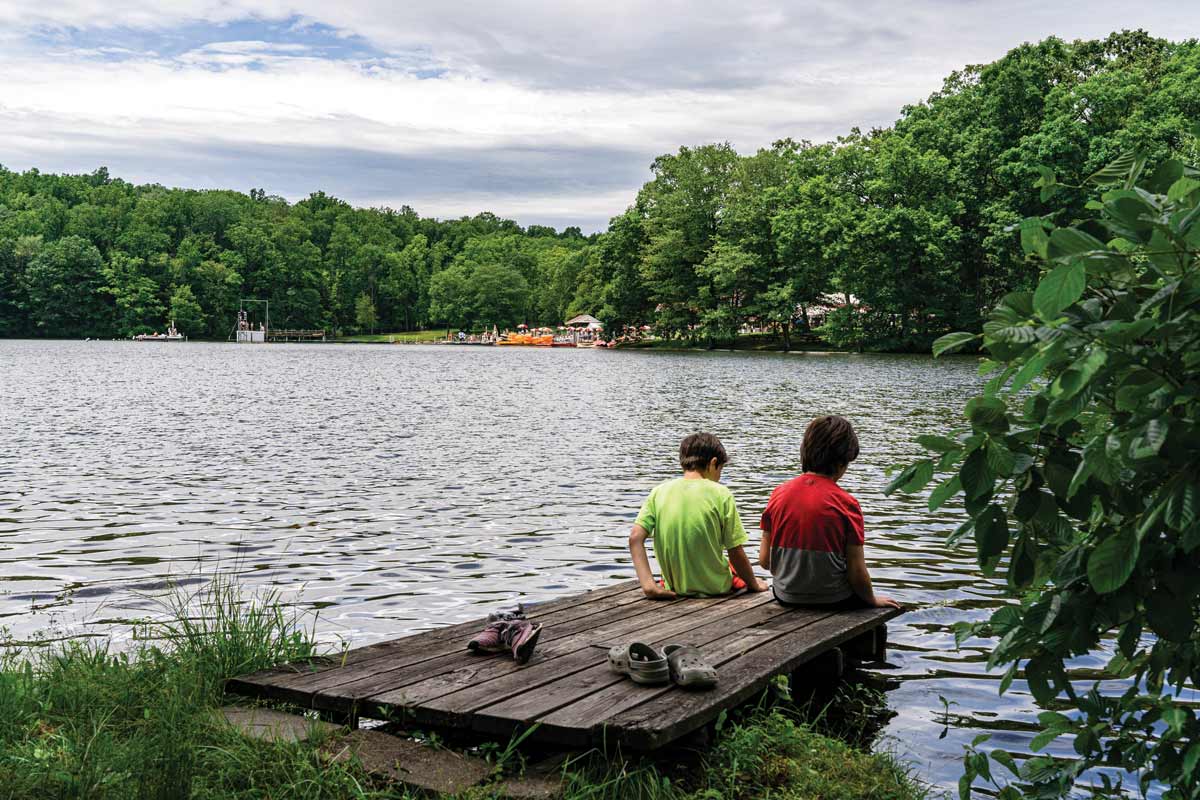
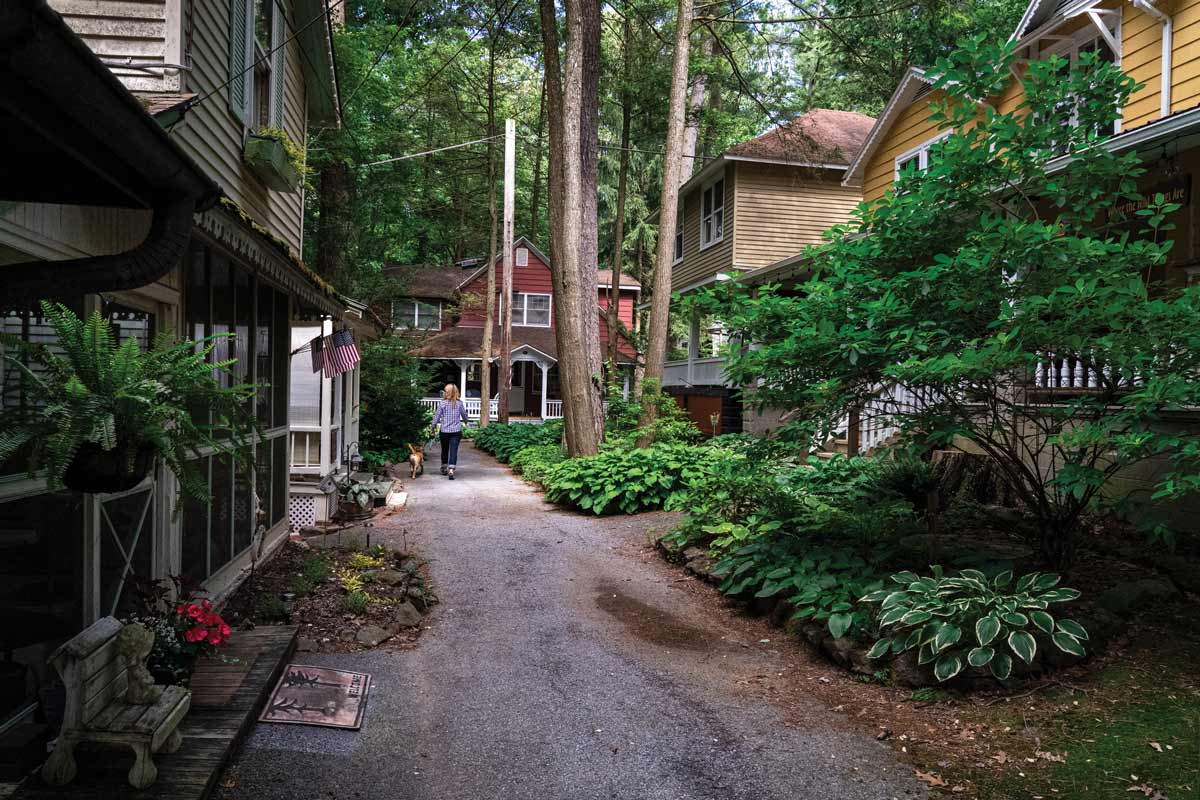
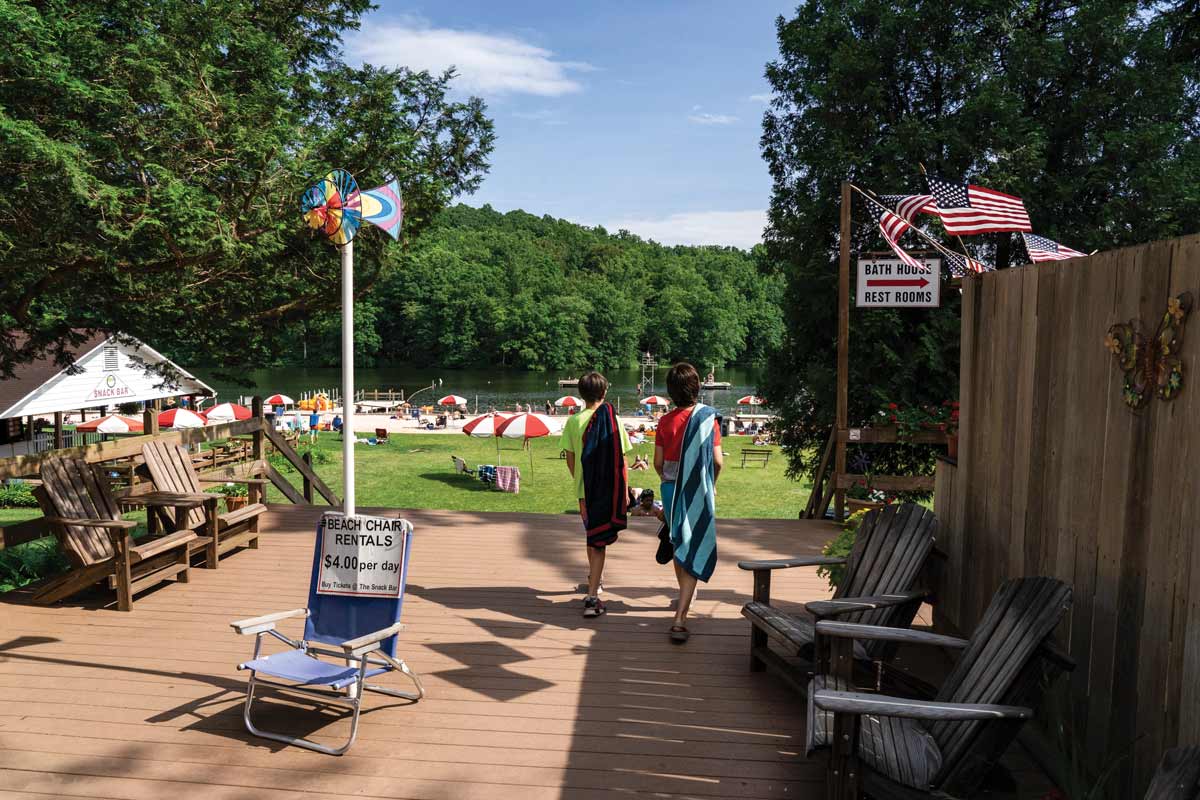
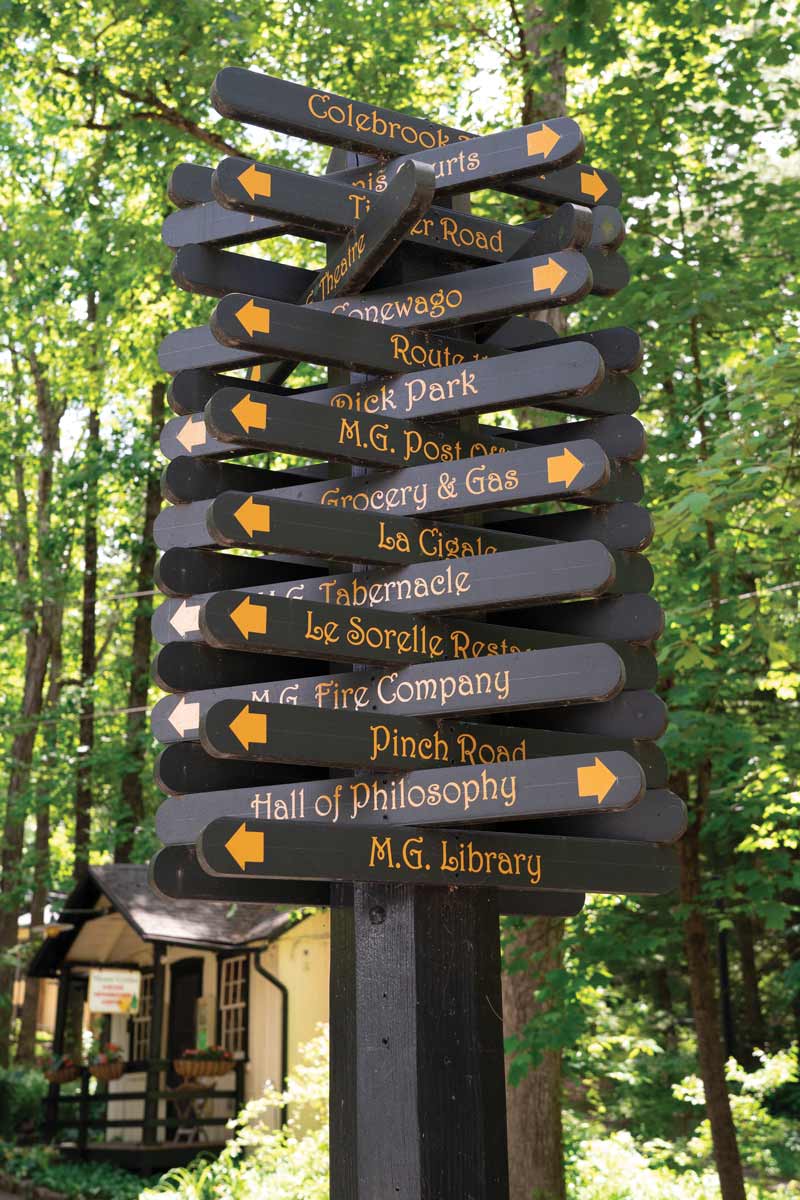
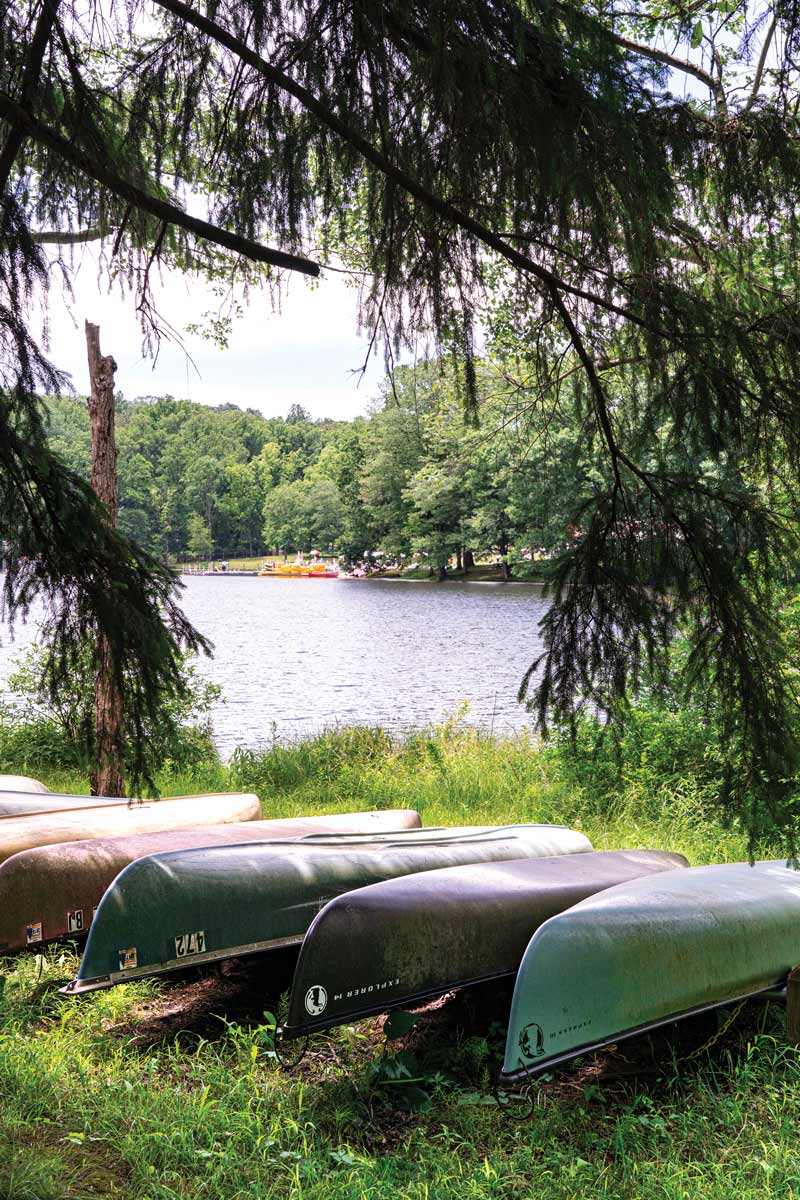
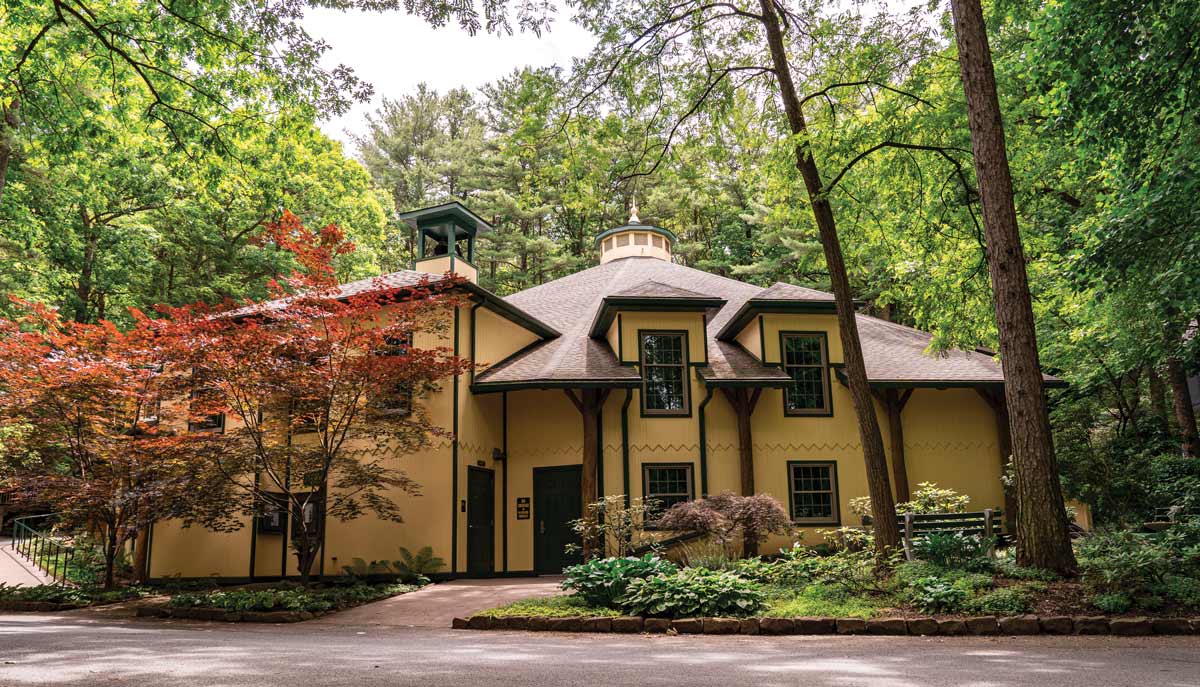
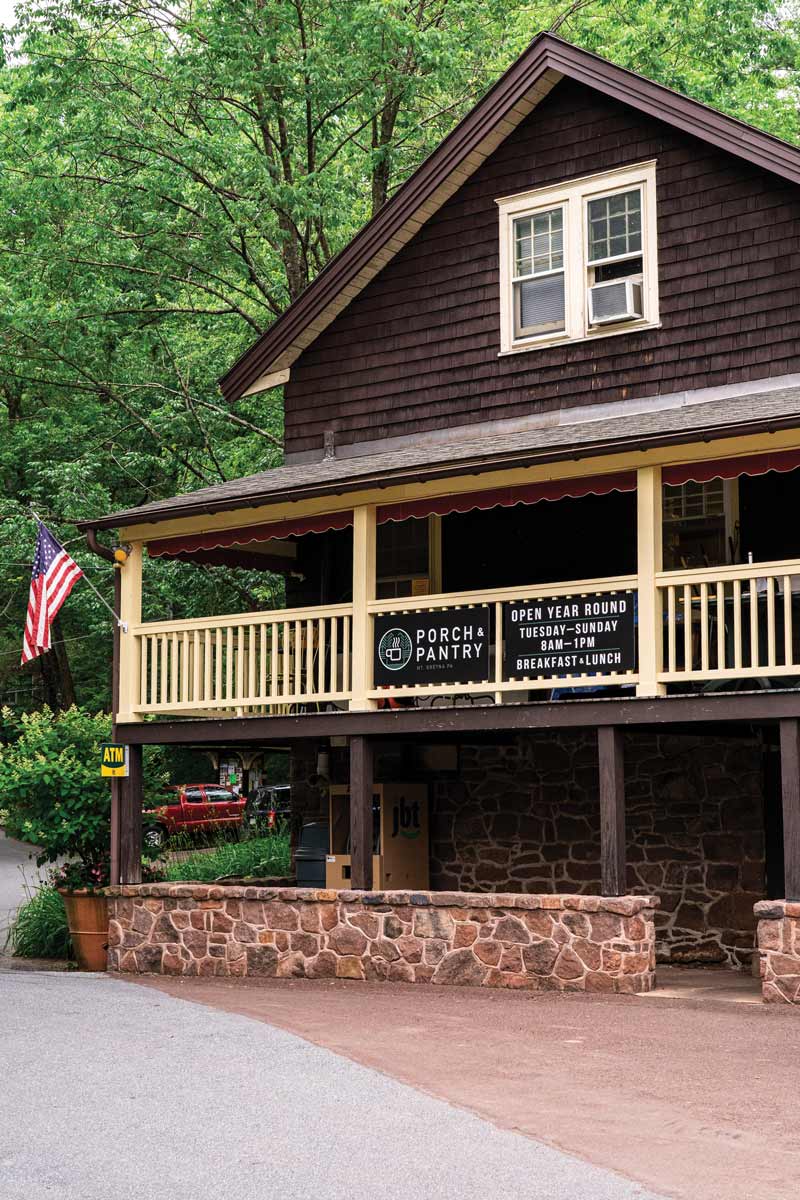
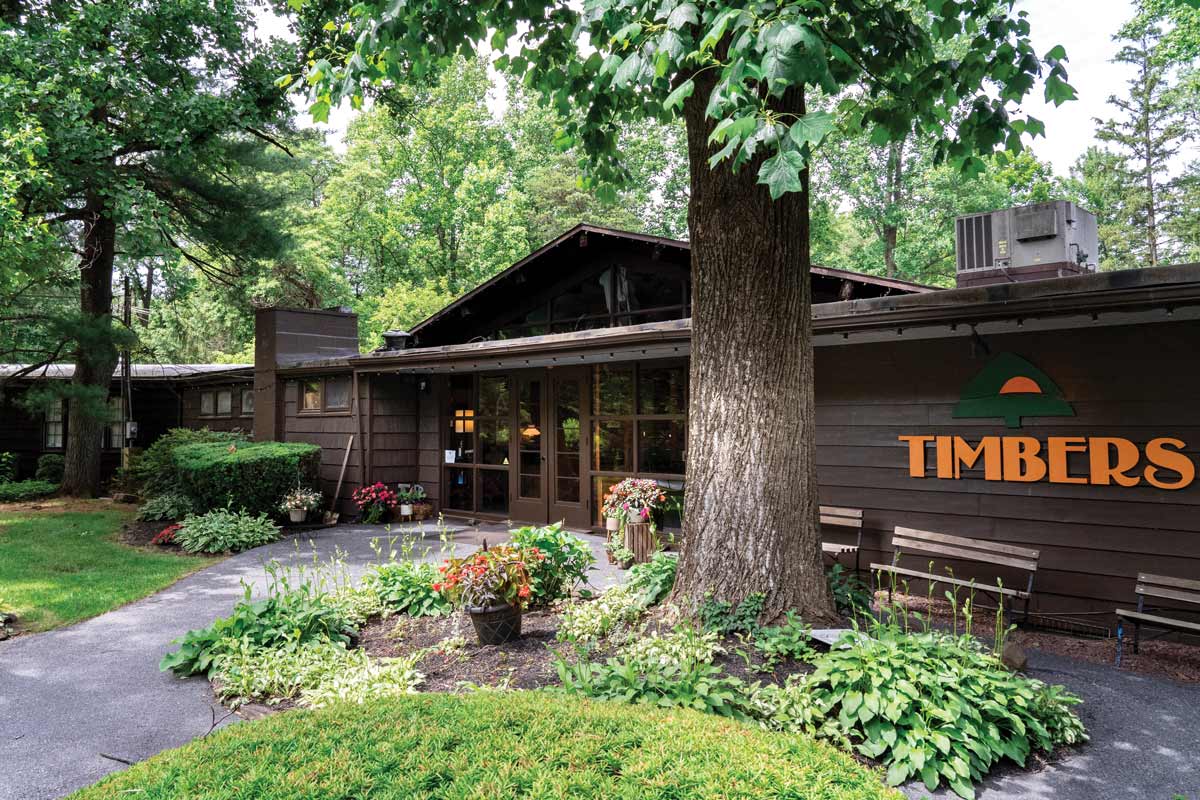

There is also dedicated Art Gallery in Mount Gretna, the Gallery at La Cigale. Located in the building next to Mount Gretna Mini Golf, the Gallery hosts different Guest Artist from South/Eastern Pennsylvania as well as a core group of Artists all year long. They have a First Friday Artist reception each month. The same building is home to La Cigale French linen Shop, a family owned business specializing in french table covers that can be custom sewn to fit your tables.La Cigale is located across from the Chautauqua.
I was a 13 year old young fellow when I auditioned for the role of ” Raymond”, Corliss Archer’s young brother, in the play “Kiss and Tell” in August, 1949 and was chosen. My brother , Tom, played the role three years earlier at ‘Gretna’. The director was Charles F Coughlan. Am now almost 85, retired USMC officer, and Viet Nam vet with some of the fondest memories from my youth of that summer at Mt. Gretna. I had at one time wanted to be in the theatre but I have this bad habit–I like to eat and aspiring actors go through famine periods and since I like to eat, I became a Marine. I still act- badly!
Best wishes to The Gretna Playhouse.
Ted Scotes